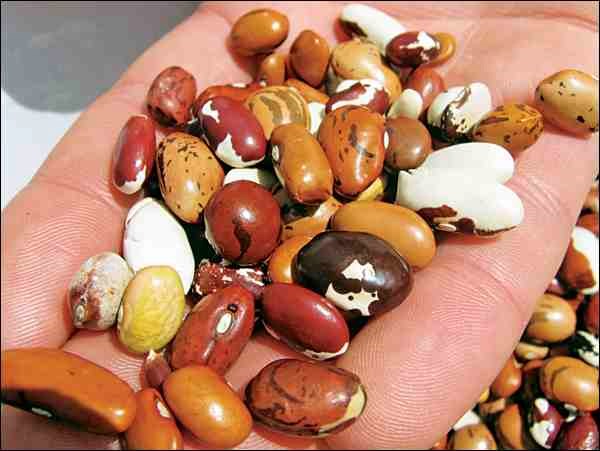Seed saving was once the province of thrifty old-time gardeners, looking to save money on their annual seed bill. While this undeniably remains a benefit, the majority of modern seed collectors are motivated more by their desire to preserve our planet's ever-shrinking genetic resources than by financial concerns.
Whatever your reasons for deciding to save your own seed, there are some important points you should consider. Many cultivars sold by seed companies are the result of painstaking and deliberate crossing of pure-breeding lines, resulting in hybrids. These hybrids (correctly referred to as F1 hybrids) are uniform, and are often exceptionally vigorous and productive, in much the same way (and for the same reasons) that a mongrel dog is often sturdier and healthier than either of its purebred parents. However, seeds collected from these hybrids will be a wildly diverse mixture of genetic traits, a few good, some bad and most average. This is what is meant when a plant is described as not "coming true from seed." In some cases, the hybrid may not produce viable seed at all, just as a mule, a hybrid between a horse and a donkey, is typically sterile.
Would-be seed savers should look for cultivars described as open-pollinated, heirloom or heritage. These open-pollinated seeds are the product of natural pollination by wind, insects, birds or mammals rather than by direct human intervention. There will be some natural variability in seeds created through this process, but less extreme than would occur in seeds collected from hybrid plants.
Peas and beans are among the easiest candidates for the novice seed saver. The seed is large, easily harvested and stores well. More importantly, they are largely self-pollinating, which means the offspring will strongly resemble the parent plants - in other words, they do come true from seed.
Collecting seed from cross-pollinating species is slightly more complicated. If you are growing a particular heirloom cultivar and wish the seed to remain true to type, you must prevent it from being pollinated by another cultivar of the same species. This may mean planting just a single variety, so that no compatible outside pollen source is available. If you grow more than one selection, they must be physically separated so that no pollen transfer occurs, or have non-overlapping bloom times. Of course, if genetic preservation isn't your goal, you may want to allow a little uncontrolled botanical hanky-panky. The results will be unpredictable, but you could discover something new and wonderful - impromptu plant breeding at its finest.
When choosing plants for seed collection, always select the best, healthiest, most vigorous specimens available in your garden. Avoid collecting seed from diseased plants, and don't base your selection on a single criterion. Saving seed from the earliest tomato plant in your garden may seem an excellent notion in our short-season climate, but if it is also weak, spindly and afflicted with verticillium wilt, it is a poor choice of parental material. Be ruthless when culling undesirable plants: you want them out of the gene pool before they've had a chance to contaminate it.
There are excellent resources available to anyone interested in learning the practical details of collecting, storing and starting seeds. Check your local bookstore or library for titles. I would also recommend Seedsaving and Seedsavers' Resources at http://homepage.eircom.net/~merlyn/seedsaving.html and the website for Seeds of Diversity's Canadian chapter www.seeds.ca
Saskatoon residents might look into the 16th annual seed exchange. Seedy Saturday is a family-friendly eco-fair promoting open pollinated and heirloom seed-saving, biodiversity and sustainable living. An initiative of Seeds of Diversity Canada and hosted locally by CHEP, the event will be held at the new St. Mary Elementary School (327 Ave N South) on March 8 from 11 a.m. to 4 p.m. A $2 donation gains you admission to the seed swap, educational workshops, keynote presentations and dozens of exhibitors. Lunch is available for $2 or pay what you can. For more details: www.chep.org, [email protected] or 306-655-4575.
In the Battlefords Seedy Saturday will be March 28 from noon to 4 p.m. at the Chapel Gallery. There will be vendors, displays and demonstrations.
- This column is provided by the Perennial Society of Saskatchewan




